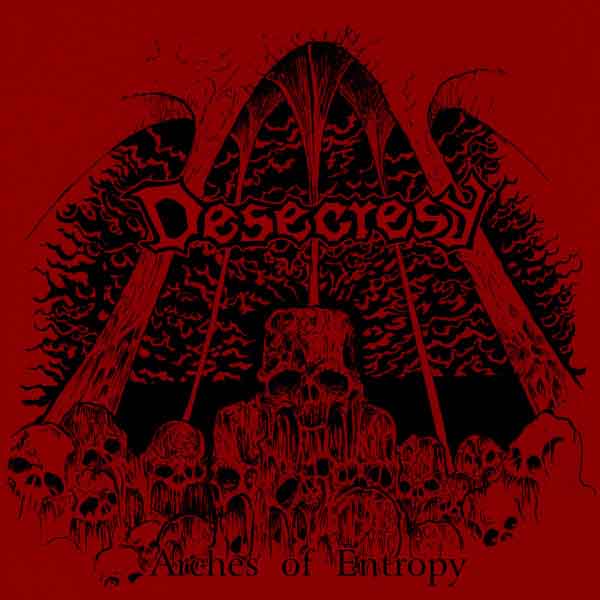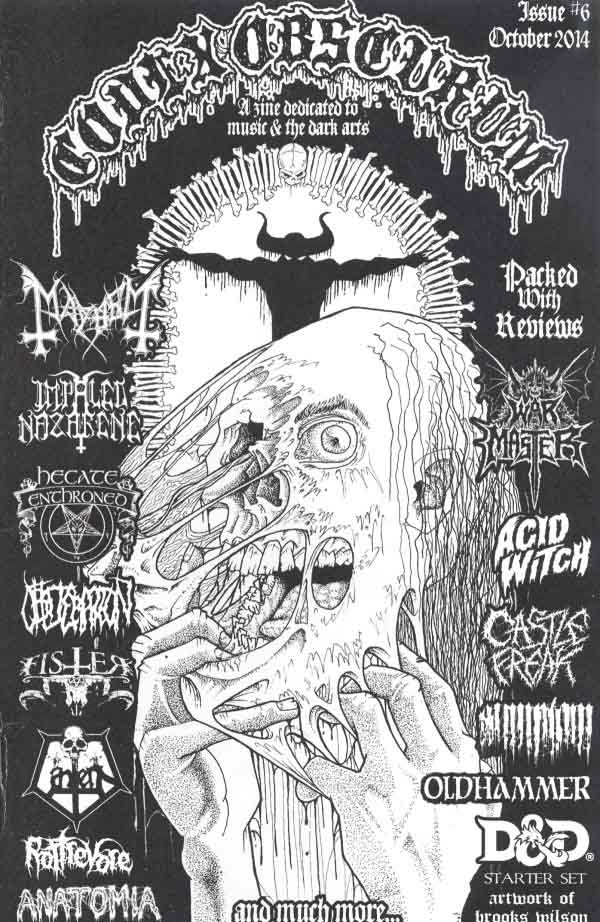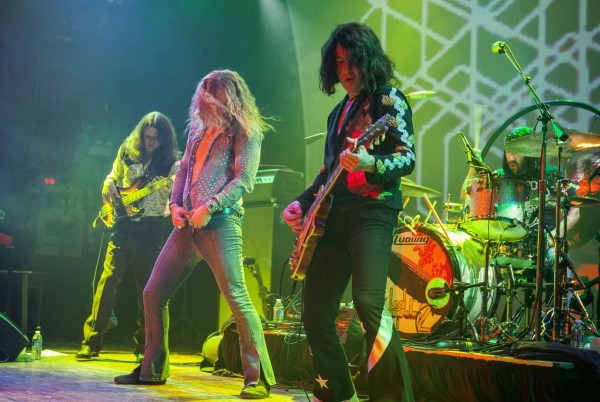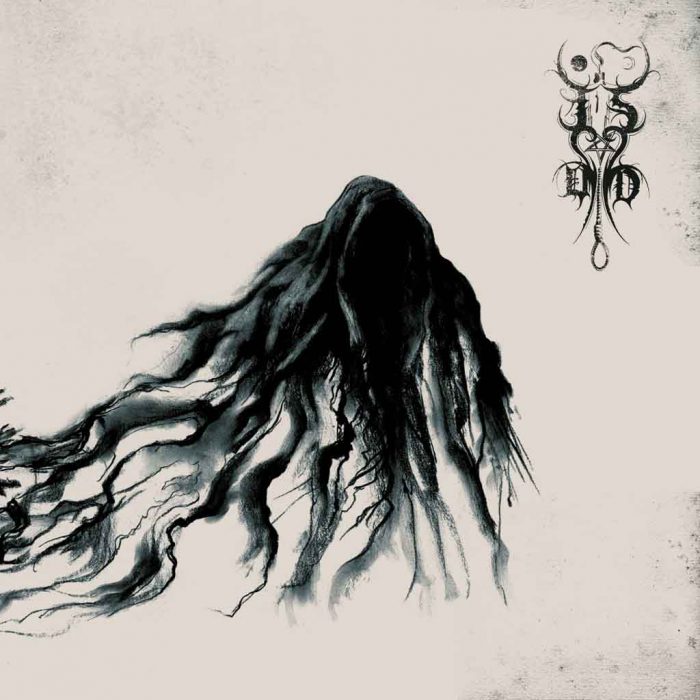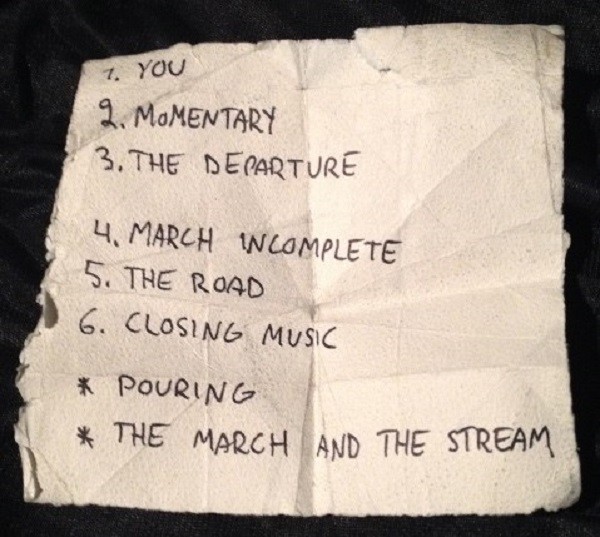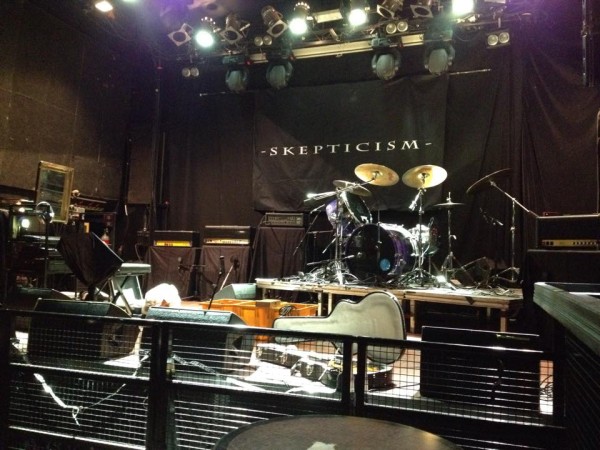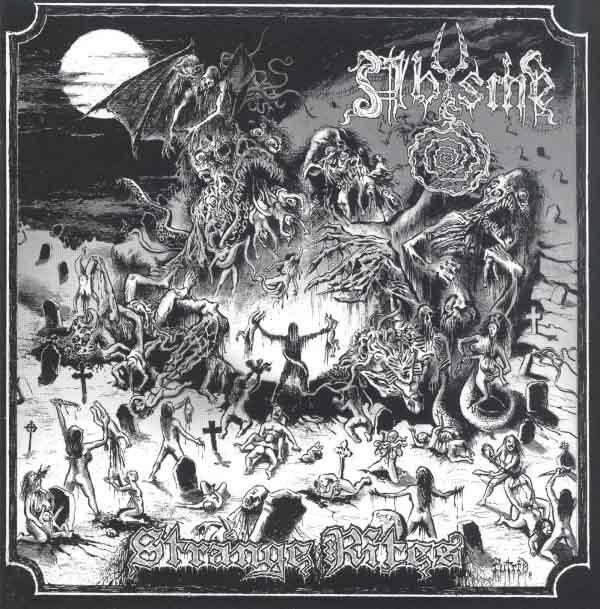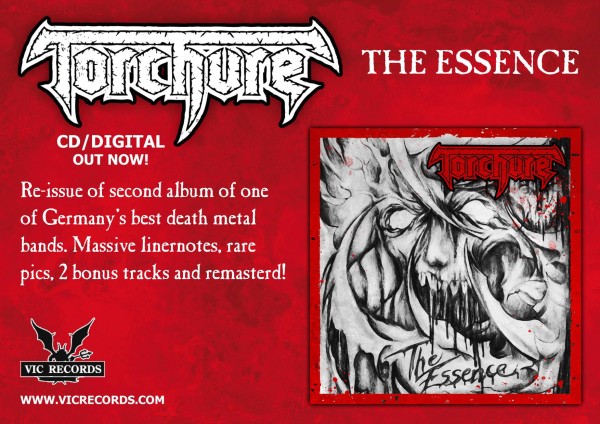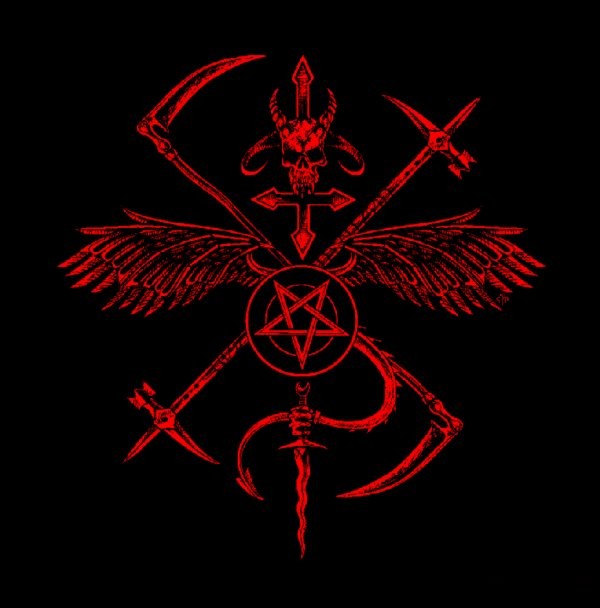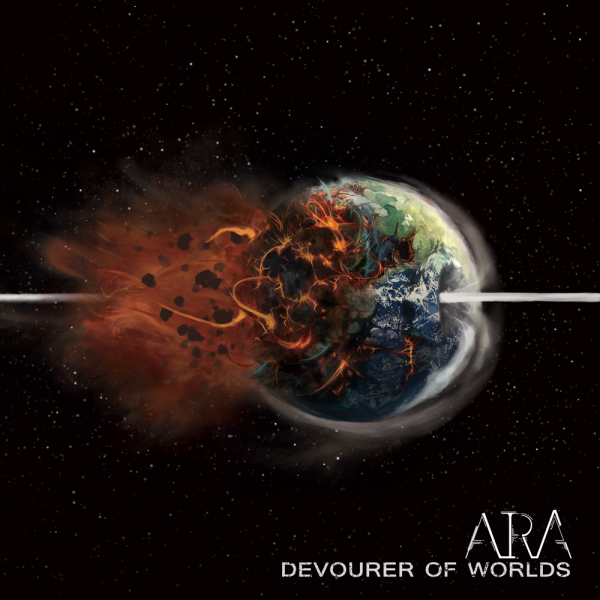
Ara drop into a difficult niche of the metal market, trying to be a fusion between modern metal or “technical death metal” like later Gorguts and contemporary Unique Leader bands who incorporate a mix of old death metal and new deathcore styles. The result causes a necessary re-examination of the difference between death metal and modern metal.
In music, composition can take roughly three approaches which can result in nearly infinite forms. In the first approach, the main urge gratified is the need for repetition and so verse-chorus patterns provide the basis with a possible “ironic” or “bittersweet” contrasting turn-around, transition or bridge. This is the most common song format, which like common tempi and common keys is chosen for the convenience of cognition both by composer and audience. The second approach takes a different view which places form in the control of the song instead of the other way around. In structure dominant songwriting of this type, melody or phrases fit together into a narrative, and this narrative — representative of content — dictates form. The problem with this form is that it is difficult, because each piece must relate to all others, instead of a reduced external standard like merely being in the same key. The third form avoids the problems of the first two by being novelty-based and requiring very little commonality between parts of a song arrangement, and generally arose from the fusion of punk rock and progressive rock, which produced more complex punk rock that often had little relation to its parts beyond rhythm. This brings us to the present time, where the structure-based and novelty-based approaches war it out in metal.
During the 1960s, rock fragmented into multiple forms. One of these, starting with experiments by The Beatles and other big pop acts, was the progressive form in which song arrangement was dictated by the needs of a narrative to the music itself; not surprisingly, many of these works were built around literature, mythology or an intricate story arc of their own. This in turn spawned the most ambitious experiments with structure which came from the space ambient bands like Tangerine Dream who did away with drums and any of the fixed aspects of progressive rock that made their songs at least initially represent standard song form. The parents who bought this material were Baby Boomers, whose music buying years of 18-28 occurred mostly between 1964-1984, and their children — who generally hit maturity from 1984-1994 — were the Generation X musicians who created death metal and black metal, and many of them inherited their parents’ albums, which since underground metal seemed to attract a fairly intelligent crop, represented the more interesting music from the previous generation. Much of the influence of progressive rock and space ambient or cosmic music came through in this generation of metal, much like the influence of aggro-prog bands like King Crimson and Jethro Tull emerged in Black Sabbath the generation before. In addition, the instrumentals from Metallica such as “Anaesthesia (Pulling Teeth)” and “Orion” as well as the lengthy “epic” compositions of some late-1970s progressive-tinged heavy metal and guitar rock influenced the new generation. For this reason, when proto-underground metal combined heavy metal with hardcore punk, it also added the type of composition used in progressive rock, from which came the process by which Asphyx calls “riff-glueing” where riffs are mated to each other on the basis of a dialogue between the phrases used in them, discarding harmony as the sole basis of compatibility along with the late-1980s “progressive punk” idea of novelty-based composition. This gave death metal its most unique aspect: prismatic composition, or the ability for riffs to be repeated in successively different contexts, such that each new iteration reveals a new interpretation based on what came before, much as in a poem that uses the same technique with repeated lines like a villanelle. While this is often a relatively minor influence, as with Morbid Angel, it remains an influence on all death metal and the dividing line between it and the imitators.
The most significant influences on Ara look to be the post-Suffocation thread of percussive death metal culminating in Unique Leader bands like Deeds of Flesh through a more complex interpretation of late-90s bands like Internal Bleeding and Dying Fetus, the 2010s interpretation of that as hybrid indie-rock known as “technical death metal” or modern metal, and old school progressive death metal like Gorguts Obscura and Demilich Nespithe. These influence style, not necessarily content, although when bands lose direction they reverse the compositional process and have style determine content, as opposed to the better method of having content select style. Ara show an insight into both riffcraft, or the act of writing riffs themselves, and the type of transitions in song that give meaning to previous riffs by shifting context. Unfortunately, they attempt to make music within the novelty-based style which interrupts itself to provide contrast instead of relying on the inherent contrast produced by such transitional moments. Bassy vocals ride herd on a stream of relatively unrelated riffs, sometimes culminating in a moment of parallax transferrence where a new riff makes the past seem to mean something entirely different, over precision technical drums. Riff forms borrow from “technical death metal,” itself a fusion of post-hardcore and lite jazz with the degraded simplified forms of late-90s death metal, and so a great variety of technique serves as the basis of these riffs, but unfortunately often this makes the riff a function of the technique and not vice-versa. If someone were to give this band good advice, it would be to look to those transitional moments and the riffs that really define each song and make all of the other riffs lead up to and support that moment even through opposing themes, which is a better method of contrast than attempting to shock the ear with radically difference or irony to the previous riff through technique alone. They have clearly mastered technique, as flourishes and fills which show influence from Gorguts and Demilich as well as a host of other metal and non-metal influences reveal, but it is the underlying structure of a song in such a way that evokes meaning which eludes them.
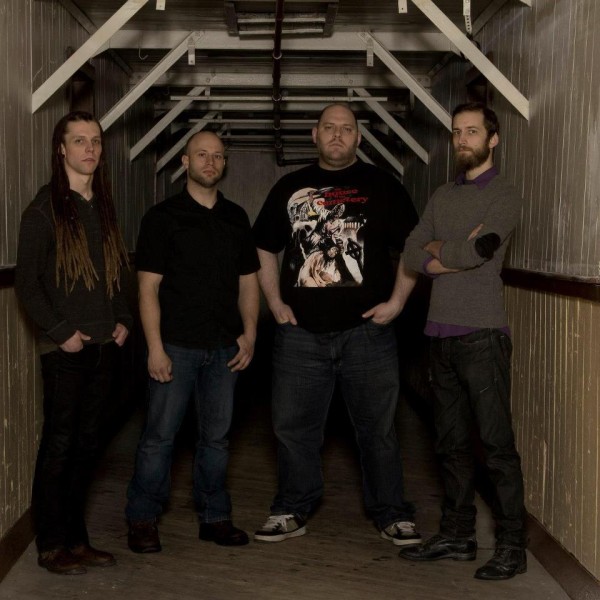
Devourer of Worlds contains a good album waiting to get out, but as it stands now, it forms painful listening because of its internal disorganization and reliance on technique alone. That makes it so much like two aspects of modern society, marketing and ideology, which serve as denial of reality using the mechanism of language and image to convince people that there is a way around the obvious realities of life. One can either focus on reality and deal with its limitations and implications, or look to symbols as a form of reality and manipulate those and then claim the result is the same as one innate to reality itself. All marketing, including advertising and propaganda, and all ideology, which combines prescriptive reasoning with propaganda to make the recipient feel pleasure at the rightness of a decision instead of its likely positive results, fit within this range of form dictating content and not the other way around. If reality is content, the form we should admire is that which fits to reality; when form is content, reality becomes secondary and we retreat into a ghetto of the human mind and forget about implication for what will result. As with all art, in music when the surface becomes predominant over content, it requires the core of each song to simplify itself or become near-random, at which point the work loses any sense of being memorable or meaningful and must content itself with novelty. These songs tend toward circularity, or cycling between two or three ideas which serve as a backdrop for the main action which is expressed through technique. This quandary calls to mind the break between the third and fourth Pestilence albums: Testimony of the Ancients increased the technicality of each song, but this put more emphasis into technique of each riff and less into the riff itself, which caused the band to rely on anchored harmonic positions much as in rock and embellish those with fills, which created relatively static phrases and as a result, simplified songs. On the album that followed, Spheres, Pestilence attempted to correct this with more guitar/synth leads and riffier songs, both returning to their earliest work but still remaining stranded within the simple-core complex-surface approach that the outward-in method of using technique to compose creates.
What makes music great as opposed to passable or adequate for a few weeks’ listening is this ability to both reflect reality and give it meaning by showing a response to it that sings of its strengths and reveals purpose to its weaknesses. All songs are in actuality songs of praise for the existence which we lead, avoiding the reaction of the human being — a type of surface-level form instead of content — and looking toward the effects on our lives as they are. These can take the form of harsh criticism of that which is unrealistic, including methods of control like ideology and advertising, and can even indulge fantasy which is different from reality but reveals it through metaphor, but they rarely include the “Vote for me and all will be perfect forever!” and “This product will make you smart, sexy and successful!” that surface-level thinking promotes. Ara are caught forever between the two and are facing the mortal certainty of choice by which the individual goes down one path to the exclusion of all others, and thus defines their life as surely as death itself, and this buries their strengths among their least auspicious tendencies. While Devourer of Worlds shows vast improvement over 2013’s The Blessed Sleep, its tendencies toward what is called metalcore — which is either a hybrid of death metal and late hardcore, as I argue, or simply incompetent death metal as others have asserted — prevent it from reaching the heights possible for these songwriters.
Personnel:
Adam Bujny – Vocals
Jerry Hauppa – Guitars
James Becker – Bass/Vocals
Erik Stenglein – Drums
60 CommentsTags: adam bujny, ara, deathcore, erik stenglein, james becker, jerry hauppa, metalcore
